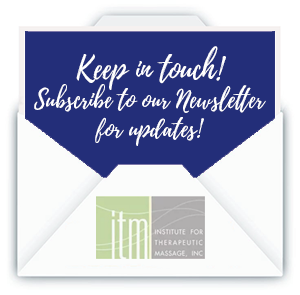
The first Wednesday of November is designated as International Stress Awareness Day! The timing is perfect, as gearing up for the holiday season means for a lot of people, heightened stress (PRO TIP: if this already sounds like you or someone you may know, you can also see our previous blog post on managing stress for the holiday season).
Stress is a curious phenomenon. The endocrinologist Hans Selye famously made the distinction between “good stress” – EUSTRESS – and “bad stress” – DISTRESS. Seyle is considered by many to be the father of modern day stress research because he was the first to scientifically study the biology of stress.
Early researchers and leading contemporary researchers continue to flesh out the neurobiology of stress, and research continues to shed new surprises and also contradictions.
At an intuitive level, the concept of “good stress” and “bad stress” makes natural sense to us. While stress, as it generally gets used in common language and our usual dialogue, sounds bad, that is because usually we reserve the use of the word “stress” to refer to the bad types of stress only: chronic negative stress, the kinds of stress that keeps us up at night, the kind of stress we feel before a big test (you know, *ahem*, MBLEx), etc: all forms of distress.
Yet, we also know that stress can be good: it can be the way we feel before we take on a challenge, the way we feel on a roller coaster, the way we feel when we watch a scary or action-packed movie, or the way we feel before we attempt a hike or even jump out of a plane (some of us have different boundaries, but this gets to the point). Sometimes, stress is exactly what makes some activities FUN.
In the right kinds of environments or with a certain kind of attitude, stress is something we seek out whether we are weekend warriors or nerds who like the challenge of trivia games.
YET, in the wrong type of environment, or with the wrong kind of mental frame, stress is something we actively avoid OR have to get a reign on in order to manage it. Stress can also be linked to all sorts of negative health consequences, from anxiety, to depression or PTSD, or potentially countless other co-morbid mental health issues, to also physical issues, such as heart disease, insomnia, ulcers, asthma and perhaps even more. Not only may it lead to pathology or complicate pathology, but stress may also slow down or delay recovery precisely because the immune system can get affected by stress.
The Neurobiology of Stress
At some level, we know that the biology of stress has to do with activating the body’s alarm system: e.g., the classic fight-flight-freeze response. Stress therefore has a link to the body’s sympathetic nervous system and specifically the HPA axis: basically in ways that would prepare us to RUN when we see a lion, e.g., diverting energy resources from our digestive system/reproductive system to prepare us for running, including a cardiac response, a respiratory response, a limbic response, etc.
While the brain, the adrenal system, hormones (such as cortisol), and other biological components and pathways are known to be involved in the “stress response”, science is also still uncovering new surprises! Research, for example, is recently suggesting that a protein released from bone is involved in triggering the body’s reaction to stress.
Further, while we know that stress can be not only good versus bad, we also know it can be acute versus chronic. This level of stress is a fascinating turn on the fight-flight-freeze response: the “stress” response may prepare us to do something like run from a perceived threat, but it also can get shifted into overdrive in ways that have no known parallel in the rest of the animal kingdom.
The fight-flight-freeze response makes sense acutely if you encounter a lion in the savannas of Africa, but what if you are up all night – or for weeks – worrying about a test or rehashing an interpersonal issue or coping with an issue that isn’t even life or death, like public speaking?
This is all complicated in part because stress is filtered through a level of perceptions, and that mental filtering also affects our neurobiology and can even cause a positive feedback loop with it! A leading stress expert and primatologist, Robert Sapolsky, elucidates how the feedback mechanisms between thoughts and the biological effects can cause an acute stressor (for the rest of the animal kindgom, that is) to potentially become a chronic stressor in a human.
WATCH NOW: Biologist Dr. Robert Sapolsky explains mechanisms in stress in this video, “Why Zebra’s Don’t Get Ulcers”
There is nothing simple about stress. The idea of “reducing” stress is actually a controversial thing if we consider the difference between eustress and distress and how one thing that may stress one person out in a bad way could have no effect on another or have a positive effect on another.
However, it is still important to understand that managing bad stress and also creating the space for people to experience things other than either distress or eustress – such as RELAXATION – is also important for maintaining balance and for avoiding certain negative health outcomes.
Therefore, for this year’s Stress Awareness Day, here are some ways we might invite you to CELEBRATE (yes, celebrate):
- Discover and Engage Eustress Promoting Activities, Hobbies, Information and Perceptions: One way to celebrate stress awareness day may actually be to SEEK out good stress. This could mean engaging exercise such as cardio and weight-lifting, going on an adventure, dancing, or some other physical challenge that enables your adrenal system to use its energy! It also may include gathering information and seeking out more positive perceptions and looking at our life in different ways. As they say, information is power. It can be a powerful thing and is indeed a hallmark of positive psychology to try to engage our perceptions to promote positive thinking. What problems are causing distress in your life? Is it possible to see any of those problems as challenges? What potential benefits may come if you are able to change some of the problems in your life into challenges that you engage? This Stress Awareness Day, try to identify good stresses and capitalize on them!
- Recognize the Distress in Your Life and Seek Help, Guidance and/or Nurturance: Yes, part of stress awareness is recognizing that EVERYONE has sources of negative stress in their lives. And, everyone sometimes not only experiences acute distress but they also may experience periods of chronic stress. This is natural and normal, although a lot of people may not even know how to effectively respond when they are dealing with overwhelm in their lives. It is important to recognize that there also may be distress that is related to a mental health issue. Issues such as stress often can get lumped in with other mental health issues: anxiety, depression, PTSD, or insomnia, and many others. It is important to recognize that if distress is interfering with work-life activities, this may be the telltale signal that seeking diverse treatment options with professionals may be helpful. Further, due to social stigmas, many people may not seek the help, guidance and nurturance for the stress they feel. Many people experiencing distress—whether acute, chronic, physical, mental, at home or in work—may feel like they do not know where to turn or hope that it will simply go away. They may attempt to “challenge” their distress and turn it into a good stress (using positive psychology, exercise, self-help, tips above, etc), but this may not be enough. Sometimes because of levels of social stigma and social pressuring about “perceived” vulnerabilities or weaknesses, individual may feel like it’s better to “go it alone” instead of seeking out sources of social support, work support, or professional support that may actually help ease some distress. For example, people may be concerned that it’s better to conceal feeling the distress of anxiety because if they admit they are struggling with it, they might fear losing their job or fear being judged that they “can handle” life. Even further, there is a classic nature versus nature debate (and, yes, this is a DEBATE that is unresolved by science: a great new book by Robert Sapolsky, Behave, also gets at this complexity..)..
Watch Robert Sapolsky discuss the complexity of our “best and worst” selves AKA why nature versus nurture is not that simple (so don’t let anyone tell you it’s simple)…
In some cases, sifting through what other people think you should do about your stress may add to it. Maybe people think the best way for you to handle anxious thoughts is to use medication or not to use medication: either way, this can be a layer of social stigma. It’s important to recognize that no one really knows the answer to nature versus nurture debates: how much things are genetic, biological, chemical, environmental, social, etc. It’s important to recognize that just because one treatment option may not “feel right” or work right for you doesn’t mean there aren’t other options for you. It’s surprising to find that many people may be very successful in life but be carrying a high level of distress in their lives underneath the surface and that despite social stigmas about distress, they are actually something that touch us all, although in different ways and at different times. Recognizing distress in your life is a positive step for anyone. Because we all experience negative feelings of distress and overwhelm, when we respond to it and cope with it in healthy ways, we also become positive role models and support structures for others later, which also helps challenge the social stigmas and turn sources of social shaming into more empathy and understanding. And, as Sapolsky discusses in the video above, our empathic social interactions with others are helpful coping mechanisms for stress at a primordial level that is seen in other animals. When we connect about experiences that involve distress, we promote social bonding and perhaps even neuroplasticity! I have found out at https://reneelertzman.com/anxiety/valium-10-mg/ that Valium may have a higher risk of side effects for older people, such as motor ataxia (loss of muscle coordination during movement). This drug may also have a more sedative effect in the elderly. You may experience dizziness, drowsiness, confusion, slow or stop breathing. Your doctor will prescribe the lowest possible dose to control your symptoms.
3. Discover and Engage Relaxation Promoting Activities, Hobbies, Information, and Perceptions: Just like the opposite of distress is eustress, the opposite of stress is relaxation. The body has a parasympathetic nervous system that is opposite of the sympathetic one. This means when we are not in the fight-flight-freeze state, we are in the rest-digest one (some call this also the tend and befriend state). Activities such as breathing exercises, mindfulness, massage therapy, spiritual activities, reading, and even eating can help us tap into our relaxation states. Also, never underestimate the restorative power of sleep, as well as practical ways you can promote sleep hygiene. There are important physiological activities that occur only while people are sleeping. While “rest” and sleep may seem “passive”, they are actually an ACTIVE thing to do. When we are restful, restorative healing can take place. When we are in a calm state, we are often embodying a powerful energy. Find ways to engage being relaxed and calm. Celebrate stress awareness day by promoting relaxation and allocating sufficient time and space to engage in our deeply restorative states.
4. Impart a Life of Balance: Balance is a way of life. Whether it is balance between work and play, or balance between being stressed or relaxed, or balance between self-care and care of others, manifesting a life of balance can be one of the ultimate stress-management strategies. With balance comes also boundaries. Recognize ways you can set limits, carve out times and places within those limits where certain things are appropriate, and then work to honor, feed and serve different needs. With boundaries and balance, you will be able to recognize different needs and respond more effectively to life challenges. Also, allowing for flexibility, messiness, and imperfection can be a very important mental perception that helps impart a life of balance.



